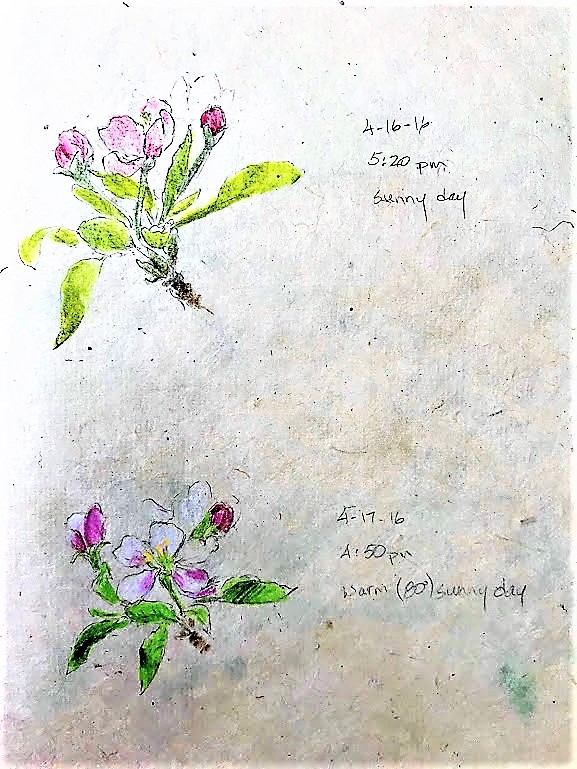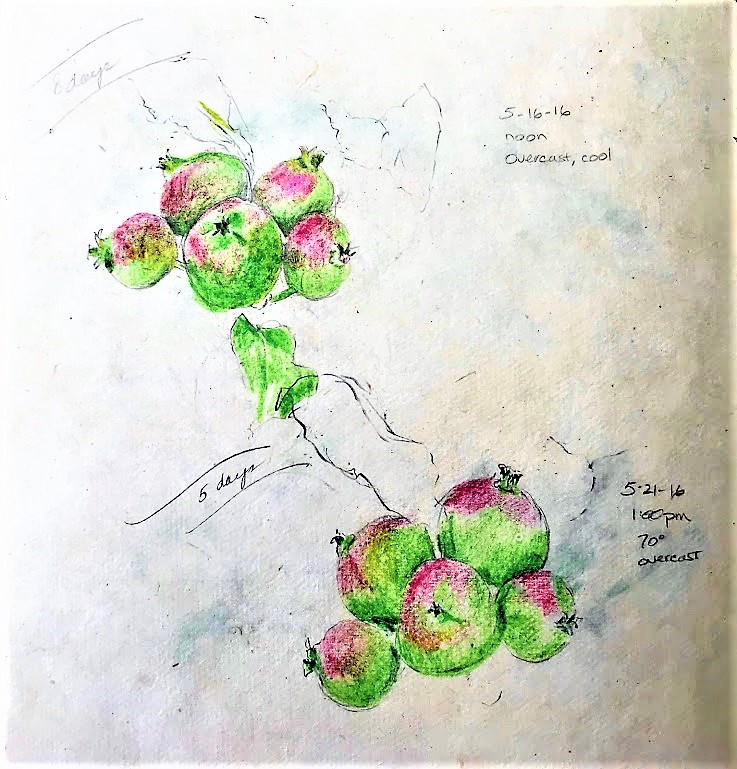
Sometimes it’s thought that learning to garden is just picking up a series of techniques. However, whether you’re tending a single houseplant or caring for a massive back yard, one of the best ways you can improve your success as a gardener is to sharpen your sense of observation.
Phyllis Helland has a simple process for doing that. Phyllis is a friend of mine who is a home gardener, and also an artist by profession. Every day she spends a few minutes observing and drawing the growth on a single plant.
This is an exercise in seeing, not producing a recognizable sketch. “If you think you don’t draw well,” she advises, “simply switch to your non-dominant hand. I always see more when I do that, because it slows me down.”

Or, use a phone camera instead. “That’s more of a broad stroke, but it still helps me see. It’s like being a little kid again,” she says. “Kids notice things and the adults are astonished.”
Now why would doing this simple exercise help your gardening? Phyllis says it will raise your awareness of what’s growing around you—whether it’s those previously unnoticed predacious bugs on the beans, or a glorious unplanned flower combination. The daily observations can also deepen your knowledge.
At one point, Phyllis was doing a daily drawing of an apple blossom as it progressed to fruit. “I knew that apples are related to roses,” she says. But, as the flower disappeared, the shriveled bits of its center—the stamens and styles—ended up on the bottom of the forming apple. Phyllis suddenly connected the natural world in a new way. She says, “Apples are just big juicy rose hips.”

Last month, Phyllis noticed a mushroom erupting in a hard-packed pathway. She started to photograph it each day. She says, “The force it needed to push through was amazing. It was so soft and like a souffle; it went up without a stem, and then it went down.”
The experience of witnessing its tiny fierce moment above ground reminded her about the vast unseen network the puffball was part of, which in turn, gave her more respect for her garden soil—and confirmed her choice to keep on gardening with less tilling and more mulching.
Phyllis didn’t always pursue this kind of connected awareness. She laughs about when she started out gardening and failed big-time. She dug a bed for sun-loving plants in the shade of a tree. “It wasn’t in my yard, so I didn’t count it,” she says. “I wasn’t seeing a whole eco-system, which included my neighbor’s tree.”

So, whether you’re just starting out as a gardener, or simply want to take your observations to another level, now’s the time to look around for a bit of plant to draw or photograph, and spend just five minutes each day noticing it. Perhaps you can do that in your home or in your greenhouse. Or maybe out in the garden between raindrops. Keep your drawings and photos for a season, so you see the progression.
Let me know what you discover.


